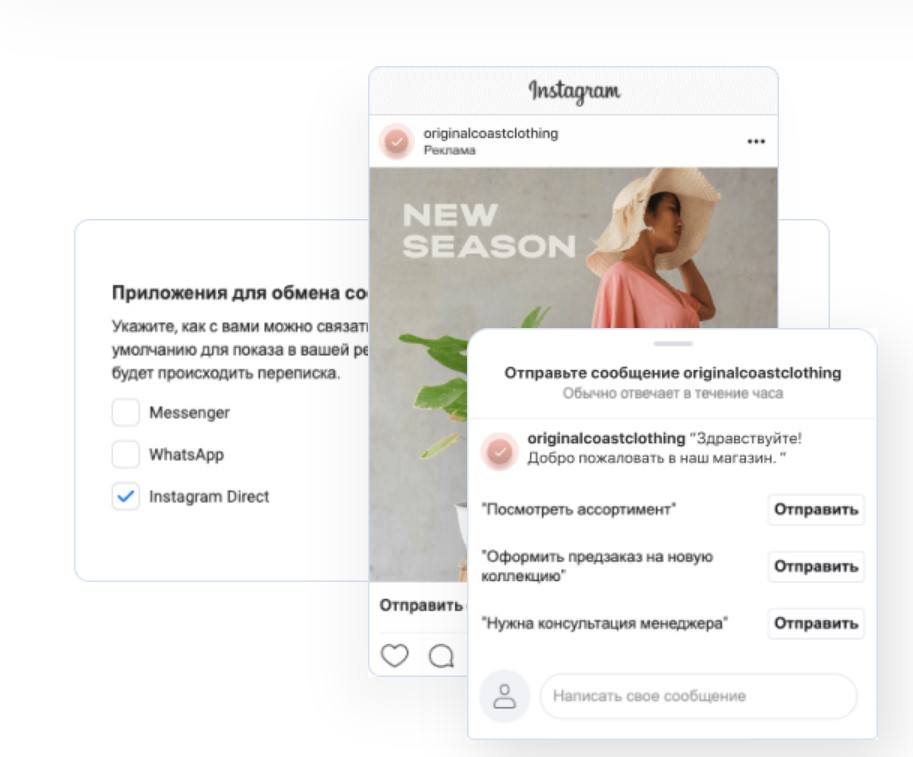In the world of Instagram marketing, there are two types of people: those who are aware of changes on the platform but think they don’t apply to their brand, and those who recognize them and adapt their brand strategy accordingly. Over the past years, Instagram has introduced numerous improvements. For example, new posts in your feed will now wait for you, instead of disappearing into the stream, and the feed itself will show more relevant content. In short, the platform’s owners want to ensure that 70% of posts actually reach their audience.
As a result, marketing on Instagram is becoming more complex and meticulous, as every post must now not only appeal to your target audience but also attract a broader range of users. And not just because of the algorithm. It might sound cliché, but it’s one thing to run a personal account filled with selfies, food pics, or travel shots — and a completely different story to manage a brand’s presence and promote a business. You can’t just post a breakfast selfie of your CEO. It’s... inappropriate. On their personal account — fine. On a brand page — not so much.
That’s why Instagram marketing strategies both resemble strategies for other social media and differ slightly. But ignoring the platform in today’s world is a mistake. Let’s explore how to simplify your strategy, what to focus on, and why Instagram is vital for your business.
Engagement Is Critically Important
Instagram is an impressive platform. Open it for the first time, and you’re hit with an ocean of photos — strangers in various poses, facial expressions, cities, and countries. Occasionally, photos of places or objects show up. Your first thought might be: “Why would a restaurant or an auto brand need Instagram?” Trust me — they really do.


Engagement is one of the core elements of online marketing, arguably more critical than in other platforms. It includes comments, videos, messages, subscriptions, views, likes — everything. And this very engagement helps you understand user activity, which in turn determines your marketing success.
Capturing attention has always been key in social media. But Instagram’s new algorithms take it to another level. A brand’s profile now grows based on engagement. Let’s be honest — the more interaction your photos receive, the higher your visibility. But getting users to interact could take years… while the restaurant just opened! So, what’s the secret?




Also worth mentioning: Stories have been updated in line with the new feed algorithm. If someone regularly watches your Stories, Instagram will prioritize them in their feed. That’s a win!
Consistency & Coherence
Followers become fans when they know what to expect from a brand and its content. That’s why Instagram strategies often focus on posting frequency (consistency) and a coherent brand tone (visual style, messaging, topics, etc.).
Posting frequency — ideally twice a day. That’s what the project planning tool CoSchedule recommends. But it depends on your brand, industry, and strategy. The key is to stick to a schedule. You can post more if needed, but not less. News portals, for example, post frequently.
Brand tone includes design, language, and communication style. The audience has its own way of speaking; your company may have another. If your brand tries to mimic user slang carelessly, it might backfire. For instance, in a post about cosmetics, you might use “makeup for mature skin” — but saying “makeup for adults” or “makeup for those past their prime” is clumsy and tactless. Nuance, politeness, and correct terminology matter. That’s what users expect from a brand.
.jpg)
Information on your website should ideally match your Instagram content. For example, wildberriesru uses Stories to advertise a product and link directly to it. Or they add links in the description. But sometimes, there's no connection — car dealerships or furniture brands may just post visuals and say: “Find it yourself.” A more open approach builds more trust in the brand.


Automation in Communication
According to statistics, 81% of users use Instagram to discover products and services, making it a powerful platform for promotion and sales. Brands use ads in feeds and Stories to direct users to websites or to DM managers.

Until recently, automating communication in DMs was only possible through gray methods or auto-replies. Everything had to be handled manually. But since August 16, 2021, Instagram opened the Direct API to all business profiles, allowing legal chatbot integration to automate routine tasks. This saves time, enables 24/7 client interaction, and boosts efficiency.
Below is a snippet of an Instagram chatbot message flow, helping an entrepreneur share paid and free offers with subscribers.
.jpg)
A virtual assistant can handle most routine business tasks. Don’t miss this opportunity!
With tools like SendPulse, you can build an Instagram chatbot without coding knowledge. Just map out the message flow in a visual builder. Many services offer this: Botmother, Aimylogic, Chatfuel, SMMBot, and others — often across multiple platforms.
Depending on your goals and the chatbot’s capabilities, it can guide customers, generate leads, explain your products, send mass messages, respond to comments and mentions in Stories, take payments, collect feedback, and more.
.jpg)
Authenticity
Authenticity — or truthfulness — is probably the most essential concept in social media. Users want honesty. For example, they don’t just want to see a flawless makeup look — they want to know how it was achieved. The tools, the techniques, the order. That’s what makes them relate, understand if it suits their skin, and maybe even buy. Openness builds interest, trust, and brand appeal.
In online marketing, user interaction isn’t just about engagement — it’s the core of brand development. Posts should not be created just to “check the box,” like: “Yep, we posted something.” They should have real value. And don’t be afraid to joke or drop the formal tone a bit. People engage more when they feel you care about them too.

Hashtags Still Matter
Don’t let Instagram’s shadowban scare you — hashtags remain a powerful way to grow followers and brand visibility. If you’re worried that using too many hashtags will get you blocked, just choose them wisely and make sure they’re relevant to your post. Some marketers use trendy but unrelated hashtags just to get noticed: “Maybe someone will follow us, maybe they’ll be curious.” But yes, that’s risky and could get your post flagged.
An Instagram update in mid-2017 made hashtags more important than ever. Now they help businesses track conversations and updates. If your brand is local or has a complicated name — shorten or generalize it. It’ll boost reach and awareness. Just don’t generalize in unrelated ways. For example, “Caesar salad” can be shortened to “caesar,” but not “cat” — even if the latter has 6M followers. That’s irrelevant and confusing.


Use different theme-related hashtags. Don’t overuse the same ones, don’t spam — and your brand will stay safe from bans while being easier to discover.
Advertising
Hashtags increase visibility, but investing in Instagram ads for business can significantly boost your reach. New algorithms reduce organic visibility, making it harder to target your niche audience. That’s where ads come in — allowing you to promote posts and narrow down the audience. Whether Instagram planned it all along is irrelevant now. This is the system we work with.

Look at the user growth chart from Statista — it clearly shows a spike by fall 2017, and the growth continued through the first half of the following year. So yes, ads work — and the results are there. Statista has tons of data on social media — worth checking out!

Final Thoughts
To sum it up, Instagram strategy isn’t overly complex, but it is detail-oriented. Its purpose is to build trust with new users and keep your existing audience interested and engaged. At some point, this interest may lead to purchases. For example, “Shokoladnitsa” cafes or “Utkonos” online stores — they post lovely photos of their food and products. Even if we’ve never been there, we may get curious and remember them — and visit someday.
Instagram representation matters for online shops, car brands, multimedia companies, even sewing factories. Hashtags, ads, and compelling posts generate interest — just like good blog content.
So, posting a photo or news update (like RIA Novosti does) can be useful, engaging, and relevant. Ignoring Instagram today makes little sense — the user base is huge, and your target audience is surely among them. That’s why quality, relevant content comes first — followed by analytics and real understanding of what works and why.
